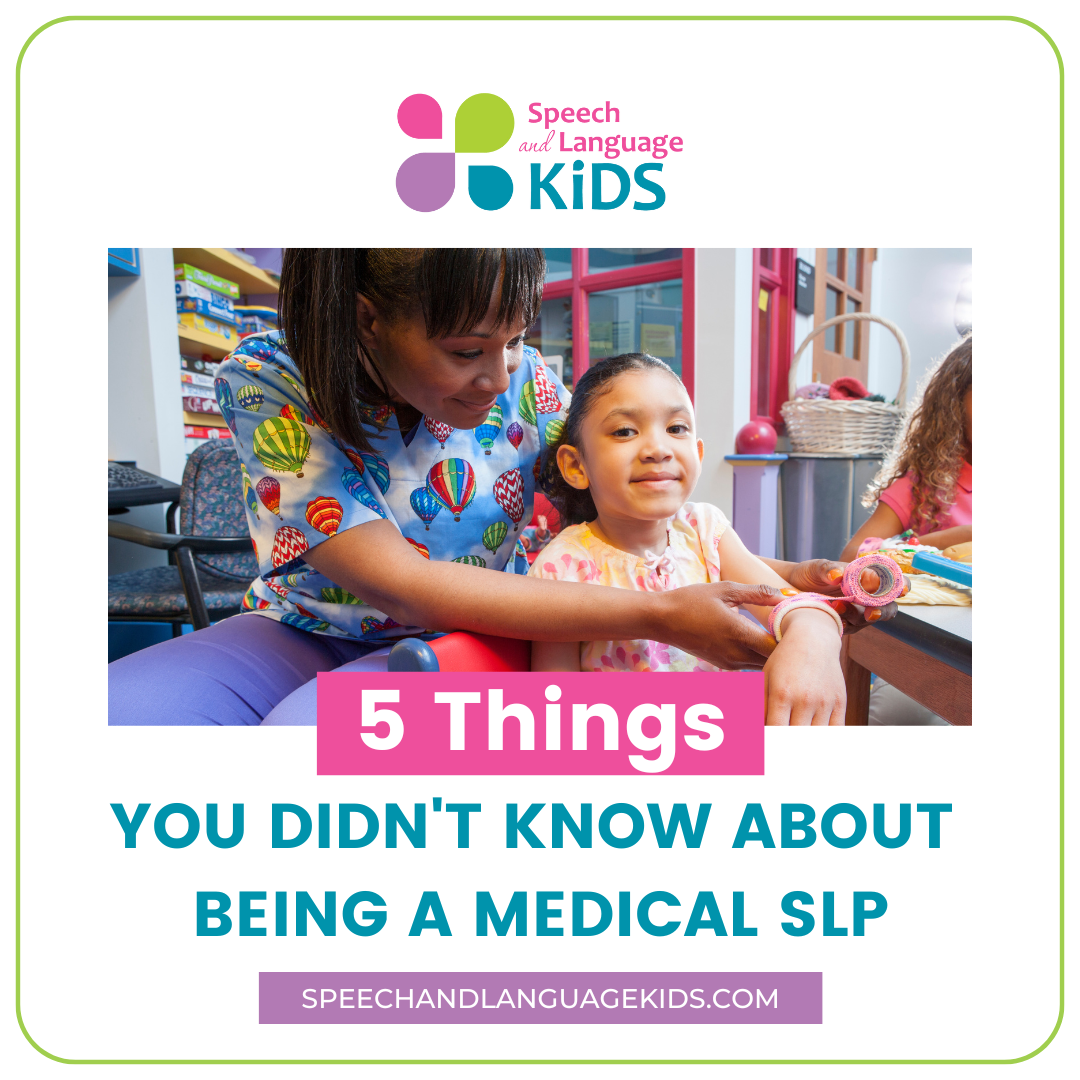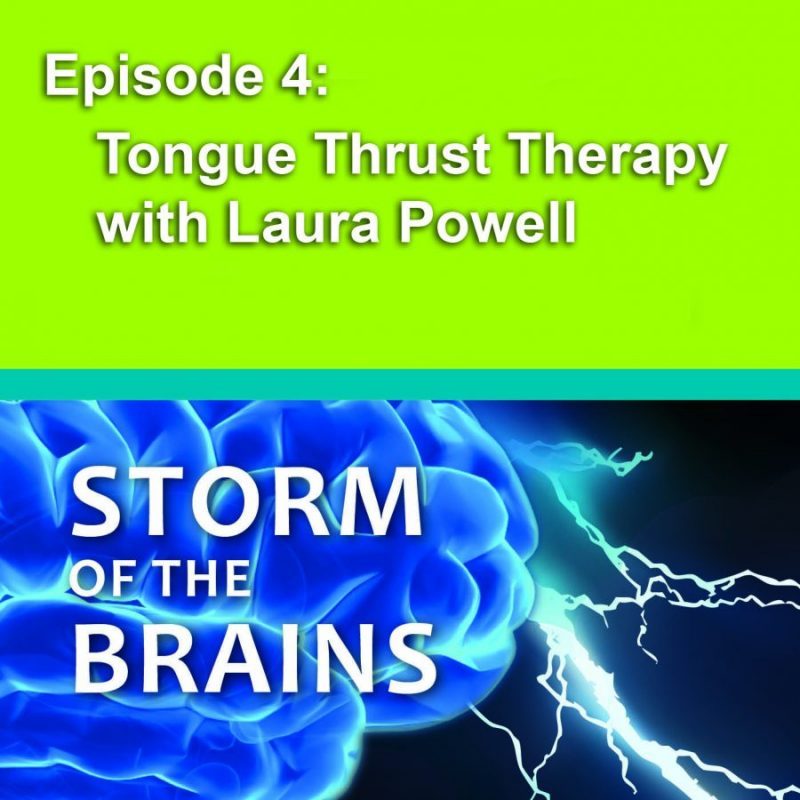Feeding and Swallowing Therapy for Kids:

Did you know that speech-language pathologists can also help children with feeding and swallowing challenges? That’s right! We cover that as well!
Feeding disorders are problems with a range of eating activities that may or may not include problems with swallowing. Feeding disorders can be characterized by one or more of the following behaviors:
- Avoiding or restricting one’s food intake (avoidance/restrictive food intake disorder [ARFID]; American Psychiatric Association, 2016)
- Refusing age-appropriate or developmentally appropriate foods or liquids
- Accepting a restricted variety or quantity of foods or liquids
- Displaying disruptive or inappropriate mealtime behaviors for developmental level
- Failing to master self-feeding skills expected for developmental levels
- Failing to use developmentally appropriate feeding devices and utensils
- Experiencing less than optimal growth (Arvedson, 2008)
Swallowing disorders (dysphagia) can occur in one or more of the four phases of swallowing and can result in aspiration—the passage of food, liquid, or saliva into the trachea—and retrograde flow of food into the nasal cavity.
(Source)
How Can we Help Children with Feeding and Swallowing Concerns?
There are a variety of treatments that can be used for children with feeding and swallowing disorders. Here are a few:
- Behavioral Interventions: Modifying environment and working to change the behaviors associated with mealtimes using strategies like prompting, modeling, fading, etc.
- Postural/Positioning Techniques: There are many different types of positions or postures that can help a child eat or drink more safely.
- Diet Modification: Changing the physical characteristics of the foods and liquids that a child eats and drinks may make it so that he can more safely and happily consume them.
- Equipment/Utensils: Certain types of feeding equipment and utensils can provide alternative ways for infants and children to get food and liquid into their systems.
- Biofeedback: Visual feedback that helps children understand how their body is currently working to swallow foods.
- Maneuvers: Exercises that can be practiced to increase the strength and improve the timing of feeding and swallowing behaviors
- Oral-Motor Treatments: Stimulation to or actions of the mouth and throat to encourage appropriate feeding and swallowing.
- Pacing and Cue-based Feeding Strategies: Changing the pacing of how quickly food/liquid enters the mouth as well as the cues given to the child can make eating and drinking more safe for the child.
- Prosthetics/Appliances: Certain physical implements can be placed inside the child’s mouth to assist in safe feeding.
- Sensory Stimulation: Providing sensory stimulation to different parts of the mouth and throat can encourage the child to chew and swallow more effectively.
- Tube Feeding: If a child is unable to safely eat and drink, tube feeding can be used to help the child maintain adequate nutrition.
What are Orofacial Myofunctional Disorders (OMDs)?
Orofacial myofunctional disorders (OMDs) are patterns involving oral and orofacial musculature that interfere with normal growth, development, or function of orofacial structures, or call attention to themselves (Mason, n.d.A). OMDs can be found in children, adolescents, and adults. OMDs can co-occur with a variety of speech and swallowing disorders. OMD may reflect the interplay of learned behaviors, physical/structural variables, genetic and environmental factors (Maspero, Prevedello, Giannini, Galbiati, & Farronato, 2014).
(Source: https://www.asha.org/practice-portal/clinical-topics/orofacial-myofunctional-disorders/ )
What is Tongue Thrust?
Tongue thrust (protrusion of tongue between teeth during swallow/rest/speech) is one aspect of and fits under the umbrella of orofacial myofunctional disorders. The area of orofacial myofunctional disorders (OMD) encompasses many aspects of facial and oral muscle dysfunction.
Etiology for OMD includes a variety of factors, including, but not limited to; noxious oral habit, mouth breathing, ankyloglossia, etc. Sometimes the symptom of the OMD presents as an articulation disorder. It is important to be aware of areas of OMD so that treatment of an articulation disorder that stems from and OMD can be targeted most effectively (by a person trained in OMD).
Specializing in OMD can be an extensive process, however, by having the appropriate and sufficient training the disorder can be appropriately addressed. If an underlying OMD is suspected, referring to an OMD specialist may be the most appropriate course of treatment.
Browse Our Feeding and Swallowing Resources:

About the Author: Carrie Clark, MA CCC-SLP
Hi, I’m Carrie! I’m a speech-language pathologist from Columbia, Missouri, USA. I’ve worked with children and teenagers of all ages in schools, preschools, and even my own private practice. I love digging through the research on speech and language topics and breaking it down into step-by-step plans for my followers.
Fun Fact: One of my favorite activities in high school was playing cello in the pit orchestra for our school musicals. For the plays, I worked back stage in the crew.
Connect with Me:









